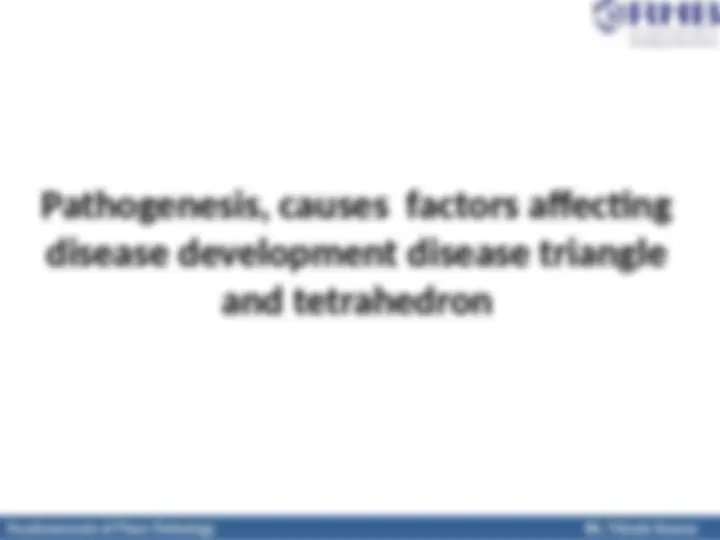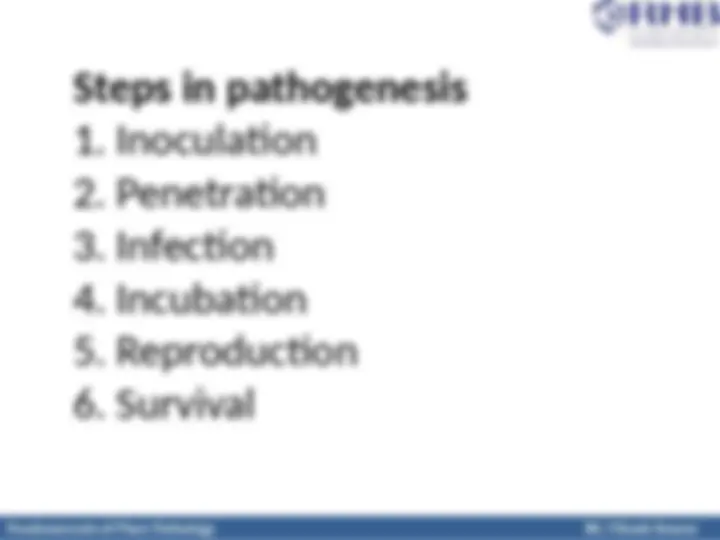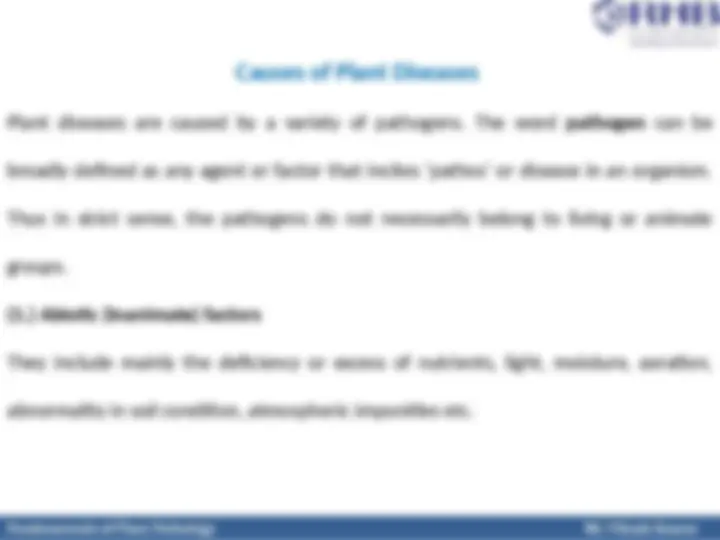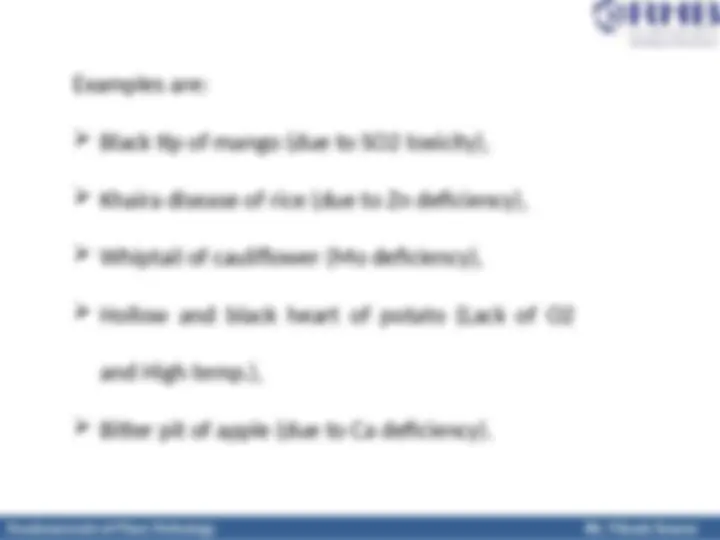









Study with the several resources on Docsity

Earn points by helping other students or get them with a premium plan


Prepare for your exams
Study with the several resources on Docsity

Earn points to download
Earn points by helping other students or get them with a premium plan
Community
Ask the community for help and clear up your study doubts
Discover the best universities in your country according to Docsity users
Free resources
Download our free guides on studying techniques, anxiety management strategies, and thesis advice from Docsity tutors
Causes of plants pathology disease
Typology: Lecture notes
1 / 13

This page cannot be seen from the preview
Don't miss anything!








Mr. Vikash Kumar (Assistant Professor)
Steps in pathogenesis
(2.) Mesobiotic causes These are the disease incitants which are neither living nor non-living. They are: (^) Viruses : They are infections agents made up of one type of nucleic acid (RNA or DNA) enclosed in a protein coat. Examples of viral diseases of plants are: potato leaf roll, leaf curl of tomato and chillies, and mosaic disease of many plants. (^) Viroids : They are naked, infectious strands of nucleic acid. They cause diseases like potato spindle tuber, citrus exocortis, chrysanthemum stunt, cadang cadang of coconut palm, star crack of apple, etc.
(3.) Biotic (Animate) causes This category includes the pathogens which are animate or living or cellular organisms. They are: (^) Fungi (^) Bacteria (^) Phytoplasmas (^) Spiroplasmas (^) Algae (^) Nematode (^) Parasitic flowering plants (Phanerogamic plant parasites): Dodder, Striga, Orobranche, Loranthus, Phoradendron, etc.